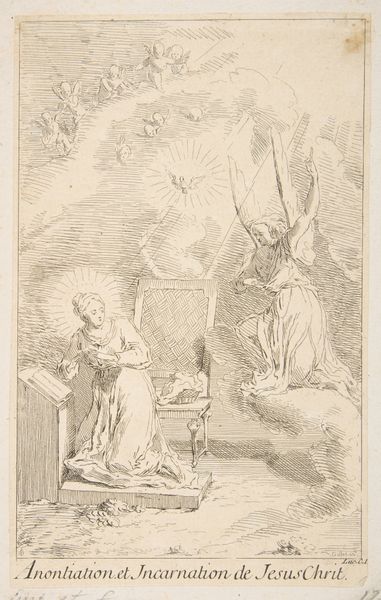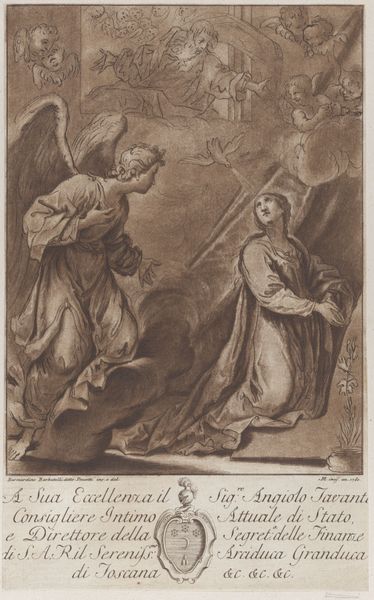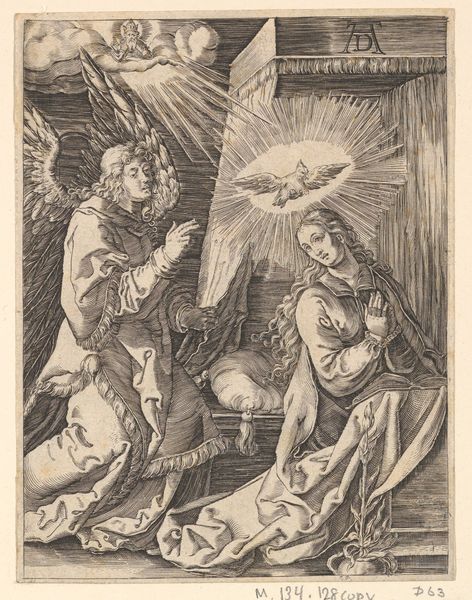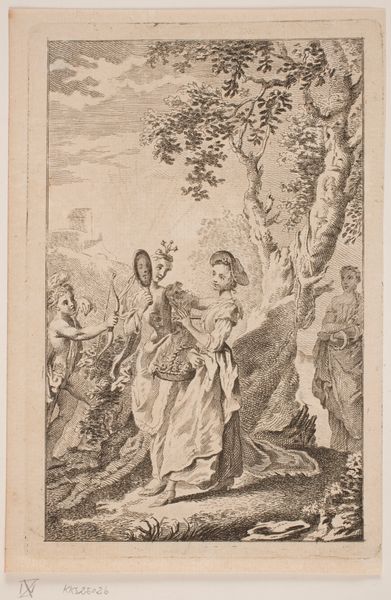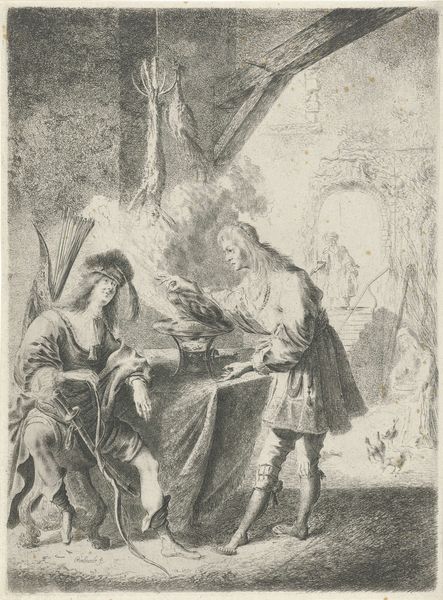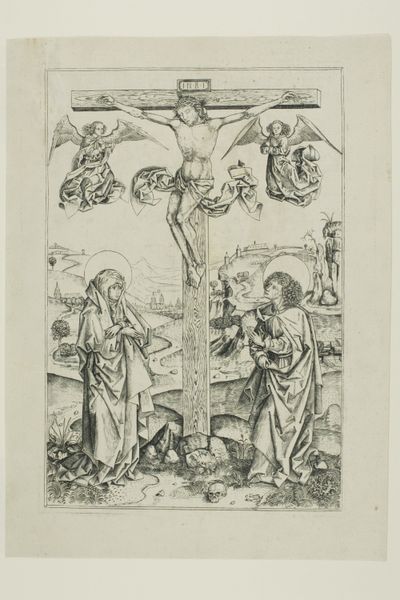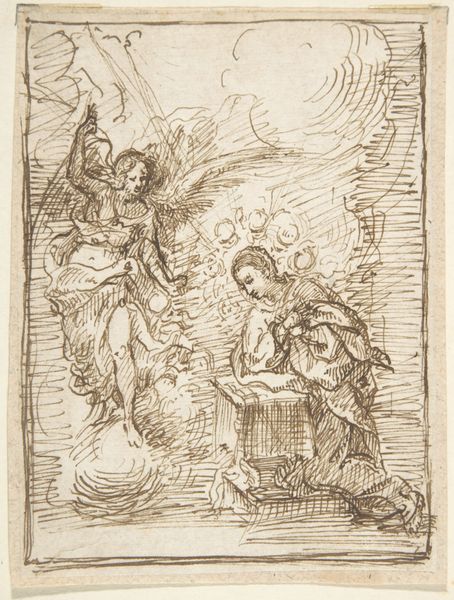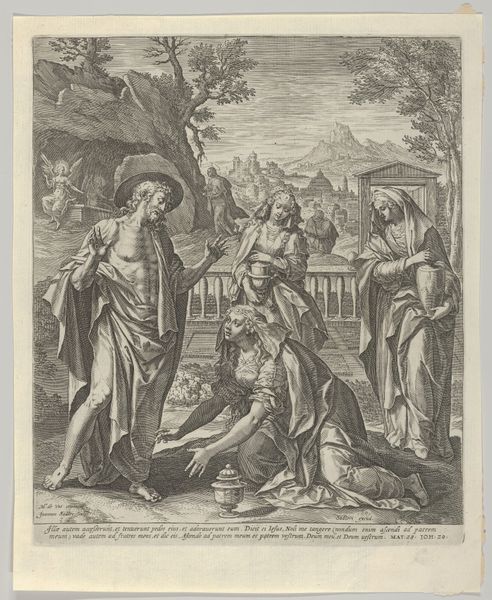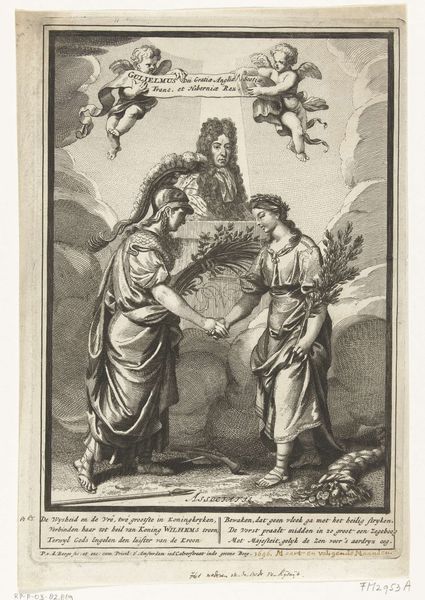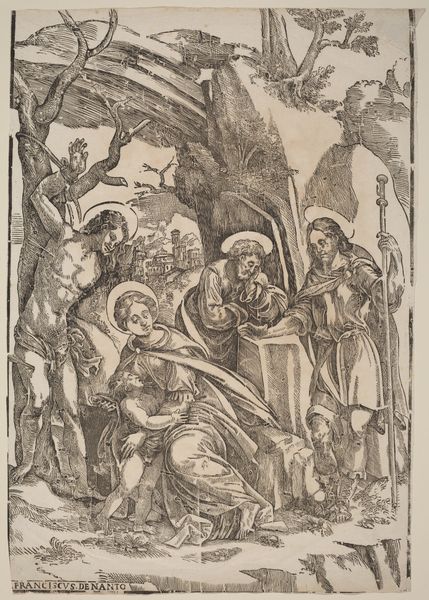
drawing, print, etching, engraving
#
drawing
#
ink drawing
#
narrative-art
#
baroque
# print
#
etching
#
figuration
#
history-painting
#
engraving
Dimensions: image: 7 11/16 x 4 13/16 in. (19.5 x 12.3 cm), trimmed to image
Copyright: Public Domain
Editor: Here we have Claude Gillot's "Christ appearing to Mary Magdalene," made between 1685 and 1722. It's an etching, engraving, and ink drawing all rolled into one! The scene is delicate, yet dramatic. What strikes you about the work? Curator: The layered process speaks volumes. Look at how Gillot combines etching, engraving, and drawing—different modes of production, each with its own set of labor practices. The very act of layering those materials challenges a hierarchy of artistic value that usually privileges painting or sculpture over these 'lesser' graphic arts. Editor: That's a very interesting way to look at it. I was focused more on the narrative and less on how it was made! Curator: But the narrative is conveyed through a particular kind of *making*. How does the use of printmaking, a medium inherently linked to reproduction and distribution, alter the spiritual message? It makes it accessible, a commodity of faith. Consider, too, the likely audience: were these mass-produced for personal devotion or for some other kind of dissemination? Editor: So you are saying the medium becomes part of the message. The availability of this image, its accessibility because of the printing process, changes our understanding of it as a representation of faith. Curator: Exactly! The material conditions and distribution methods deeply influence the artwork’s significance. Understanding the how of its creation provides key insights into the why. Editor: I never thought about it that way. It’s really opened my eyes to seeing beyond the surface. Curator: Indeed, the value isn’t just in the image itself, but in understanding its journey – how it was made, and who had access to it. A whole network of laborers and consumers brought the print to life.
Comments
No comments
Be the first to comment and join the conversation on the ultimate creative platform.

